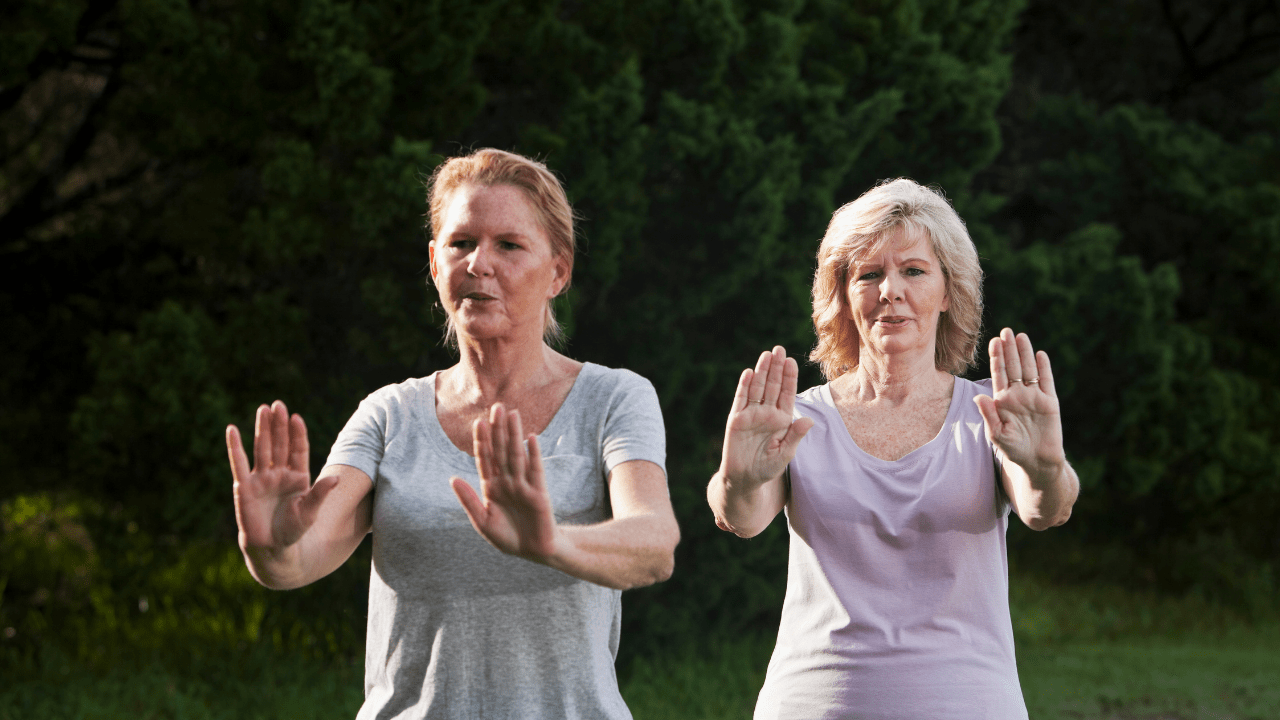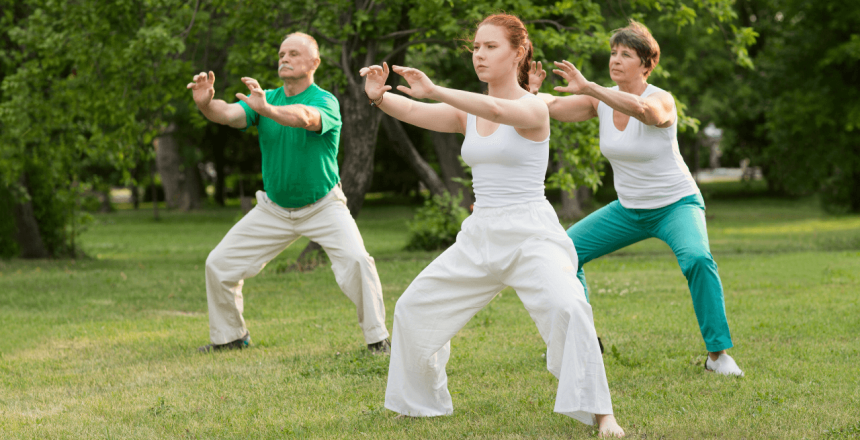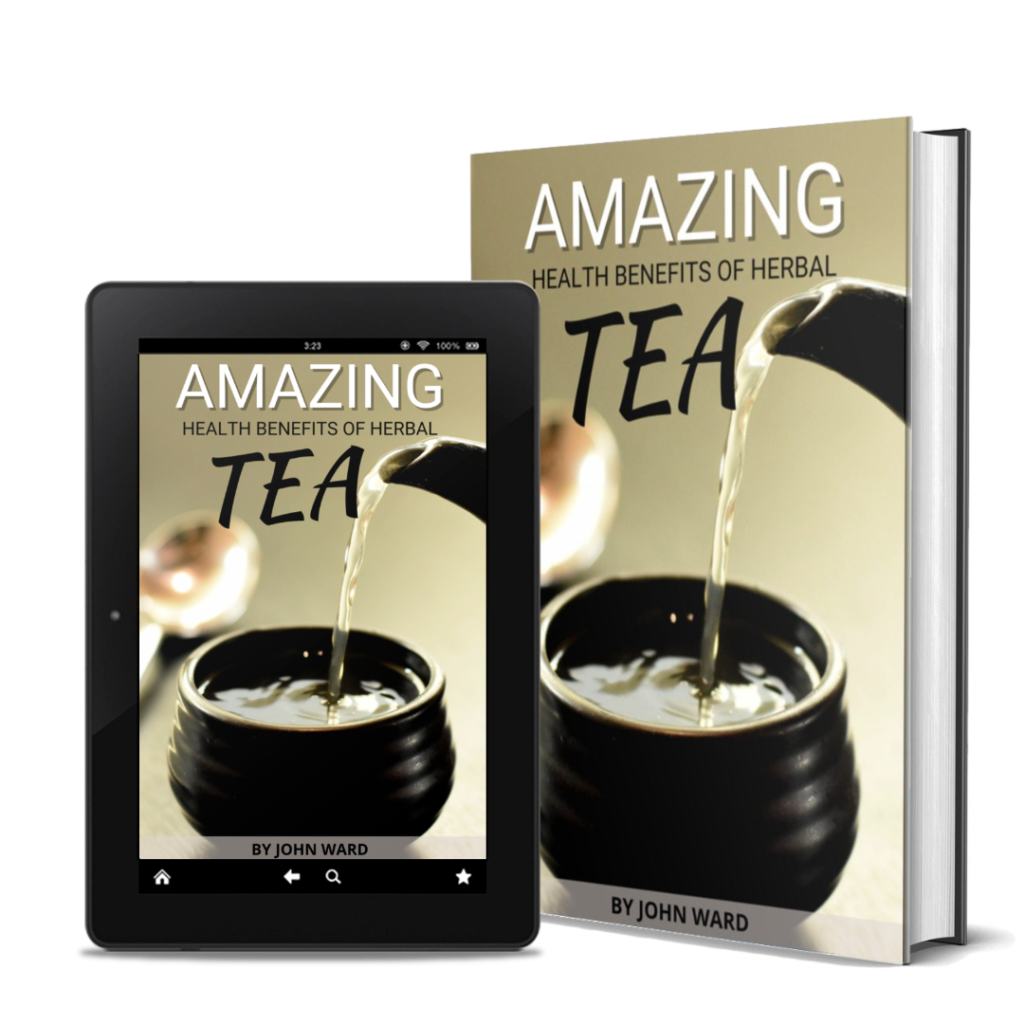The Ancient Secret That’s Quietly Revolutionizing Modern Healthcare (And It Takes Just 10 Minutes a Day)
What if I told you there’s an exercise that can improve your balance, reduce anxiety, ease chronic pain, AND help you sleep better—all while moving slower than your grandmother’s Sunday stroll? You’d probably think I’d been hitting the herbal tea a little too hard, right?
But here’s the thing: millions of people worldwide are discovering that tai chi benefits extend far beyond what most of us ever imagined. This ancient Chinese practice, once reserved for martial artists and monks, has quietly become one of the most powerful tools in modern wellness. And the best part? You don’t need a gym membership, special equipment, or even the ability to touch your toes.
Picture this: Harvard Medical School researchers have called it “medication in motion.” The Mayo Clinic recommends it for everything from arthritis to anxiety. And doctors across the globe are literally prescribing this 2,000-year-old practice instead of pills for conditions ranging from chronic pain to depression.
I know what you’re thinking—”slow-motion martial arts sounds about as exciting as watching paint dry.” But stick with me here, because by the end of this post, you’ll understand why tai chi for beginners has become the wellness world’s best-kept secret, and why this gentle giant of fitness might just be the missing piece in your health puzzle.
Meditation in Motion: Understanding the Basics
Let’s start with the basics, shall we? Tai chi exercise is essentially what happens when meditation decides to get up and move around. Imagine the flowing movements of a dance, the mindfulness of meditation, and the gentle strength-building of yoga all rolled into one graceful practice.
Born from ancient Chinese martial arts, tai chi (pronounced “tie-chee”) literally translates to “supreme ultimate fist.” But don’t let the martial arts connection scare you off—modern tai chi is about as aggressive as a butterfly landing on a flower. It’s a series of slow, flowing movements performed in a continuous sequence, often described as a moving meditation that connects your mind, body, and spirit.
The practice involves gentle, circular movements that flow seamlessly from one to the next, like water moving downstream. Your arms sweep through the air as if you’re moving through honey, while your legs maintain a stable, grounded stance. The whole time, you’re focusing on deep breathing and maintaining awareness of your body’s position in space.

There are several different styles of tai chi—Chen, Yang, Wu, and Sun being the most popular—but they all share the same core principles. Think of them like different flavors of ice cream; they’re all delicious, just with slightly different characteristics. Yang style is probably what you’d see in your local park on a Sunday morning—gentle, flowing, and perfect for beginners.
What makes tai chi meditation so special is this mind-body connection. Unlike running on a treadmill while watching TV, tai chi demands your full attention. You’re not just moving your body; you’re training your mind to be present, focused, and calm. It’s like giving your brain a spa day while your body gets a gentle workout.
The beauty of this ancient Chinese practice lies in its accessibility. You don’t need to be flexible like a pretzel or strong like a bodybuilder. Tai chi meets you exactly where you are, whether you’re 25 or 95, whether you’re dealing with arthritis or anxiety, whether you’re a fitness fanatic or someone who considers walking to the mailbox a workout.
7 Ways Tai Chi Transforms Your Health (According to Research)
Now, let’s talk about the good stuff—the science-backed tai chi health benefits that are making doctors sit up and take notice. And trust me, the research is pretty mind-blowing.
1. Improved Balance and Fall Prevention
Here’s a statistic that might surprise you: one in four adults over 65 falls each year, and falling is the leading cause of injury-related death in this age group. Enter tai chi, the gentle superhero of balance training.
Multiple studies have shown that tai chi for seniors can reduce the risk of falls by up to 45%. That’s not a typo—45%! The slow, controlled movements teach your body to maintain stability while shifting weight from one foot to another, essentially training your balance system like a personal trainer for your inner ear.
But here’s the kicker: you don’t have to be a senior to benefit from better balance. Tai chi for balance and flexibility works for anyone who wants to feel more stable on their feet, whether you’re navigating icy sidewalks, playing with your kids, or just want to feel more confident in your daily movements.
One study followed 256 physically inactive adults aged 70-92 for six months. The tai chi group showed significant improvements in balance, flexibility, and overall physical function compared to the control group. Participants reported feeling more confident in their movements and less afraid of falling.
2. Enhanced Flexibility and Strength
Don’t let the slow pace fool you—tai chi is surprisingly effective at building both flexibility and strength. The continuous, flowing movements gently stretch your muscles, tendons, and ligaments while the weight-bearing nature of the practice helps maintain bone density and muscle mass.
Research published in the Journal of Aging and Physical Activity found that regular tai chi practice improved flexibility by 17% and muscle strength by 15% in older adults after just 12 weeks. The gentle exercise for joint health aspect is particularly beneficial for people with arthritis or other joint conditions, as the low-impact movements don’t stress the joints while still providing a thorough workout.
Think of it as strength training in slow motion. You’re holding positions, shifting weight, and maintaining posture throughout the entire practice, which engages your core muscles and builds functional strength—the kind you actually use in daily life.
3. Pain Management
This is where tai chi really shines. If you’re dealing with chronic pain, tai chi chronic pain management might be your new best friend. Studies have shown remarkable results for various pain conditions, particularly arthritis.
The Arthritis Foundation actually recommends tai chi as one of the best exercises for people living with arthritis. Research published in the New England Journal of Medicine found that tai chi for arthritis pain relief was more effective than standard physical therapy for knee osteoarthritis. Participants experienced reduced pain, improved physical function, and better quality of life.
Sarah, a 58-year-old teacher from Portland, shared her experience: “I’d been dealing with chronic back pain for years. Physical therapy helped, but tai chi was a game-changer. The gentle movements and focus on alignment taught me how to move without pain. Six months in, I’m practically pain-free.”
The magic happens because tai chi addresses pain from multiple angles—improving flexibility, strengthening supporting muscles, reducing inflammation through stress reduction, and teaching better body awareness to prevent pain-causing movements.
4. Better Sleep Quality
If you’re tired of counting sheep, tai chi might be your ticket to dreamland. How tai chi improves sleep has been the subject of numerous studies, and the results are pretty impressive.
A study of 112 healthy older adults found that those who practiced tai chi for 25 weeks fell asleep faster, slept more deeply, and woke up feeling more refreshed compared to those who didn’t practice. The researchers attributed this to tai chi’s ability to reduce stress hormones and promote relaxation.
The combination of gentle physical activity, deep breathing, and meditative focus creates the perfect storm for better sleep. Unlike intense evening workouts that can rev you up, tai chi’s calming nature actually prepares your body for rest.
5. Stress and Anxiety Reduction
In our always-on, notification-buzzing world, tai chi stress relief is like a reset button for your nervous system. The practice activates your parasympathetic nervous system—the “rest and digest” response that counters our chronic “fight or flight” mode.
Research shows that regular tai chi practice can reduce cortisol levels (your primary stress hormone) by up to 23%. One study of 60 adults with moderate anxiety found that 10 weeks of tai chi practice reduced anxiety scores by 50% compared to the control group.
The tai chi mental health benefits extend beyond just stress relief. The meditative aspect of the practice helps quiet the mental chatter that contributes to anxiety and depression. When you’re focused on the precise movements and breathing, there’s no room for worrying about tomorrow’s presentation or replaying yesterday’s awkward conversation.
6. Improved Cognitive Function
Here’s something that might blow your mind: tai chi isn’t just exercise for your body—it’s a workout for your brain too. The complex movements, combined with the need to maintain balance and coordinate breathing, create what researchers call “cognitive load”—essentially giving your brain a challenging puzzle to solve.
Studies have shown that regular tai chi practice can improve memory, attention, and executive function. One study of adults with mild cognitive impairment found that tai chi practice improved cognitive performance more than conventional exercise.
The reason? Tai chi requires you to use multiple brain networks simultaneously—motor control, spatial awareness, memory (remembering the sequence), and mindfulness. It’s like cross-training for your brain.
7. Enhanced Mood and Emotional Well-being
Last but definitely not least, tai chi is a natural mood booster. The combination of gentle exercise, social interaction (if you’re in a class), and mindfulness creates a perfect recipe for improved emotional well-being.
Research published in the Journal of Alternative and Complementary Medicine found that tai chi practice significantly reduced symptoms of depression and improved overall quality of life. The social aspect shouldn’t be underestimated either—many people find that joining a tai chi class provides a sense of community and belonging that’s just as valuable as the physical benefits.
How Does Tai Chi Stack Up Against Your Current Workout?
You might be wondering how tai chi vs yoga health benefits compare, or whether this gentle practice can really replace your current exercise routine. The truth is, tai chi isn’t meant to replace everything—it’s meant to complement and enhance your overall wellness approach.
Compared to yoga, tai chi is more focused on flowing movement and balance, while yoga emphasizes static poses and flexibility. Both offer stress relief and mind-body connection, but tai chi’s constant motion makes it particularly good for balance training and functional movement patterns.
Unlike high-intensity gym workouts, tai chi is what we call a low-impact exercise that you can literally do every day without wearing your body down. It’s perfect for active recovery days, or for those times when you want to move your body but don’t have the energy for an intense workout.
The accessibility factor is huge. While you might need to modify traditional exercises due to injury, age, or fitness level, tai chi is naturally adaptable. Can’t stand for long periods? There’s chair tai chi. Dealing with limited mobility? The movements can be modified to work within your range of motion.
And here’s something your gym membership can’t offer: you can practice tai chi literally anywhere. Park, living room, hotel room, beach—all you need is enough space to extend your arms and you’re good to go.
Your First Steps into the World of Tai Chi
Ready to dip your toes into the tai chi waters? Tai chi for beginners doesn’t have to be intimidating. In fact, starting is probably easier than you think.

What to Expect in Your First Class
Walking into your first tai chi class might feel a bit like stumbling into a slow-motion dance party. Don’t worry—everyone feels a little awkward at first. The movements that look effortless and graceful when performed by experienced practitioners take time to learn.
Most beginner classes start with simple warm-up exercises—gentle stretches and basic movements to get your body prepared. Then you’ll learn one or two basic forms, which are sequences of movements that flow together. Don’t expect to memorize everything in your first class; tai chi is learned through repetition and practice.
The instructor will emphasize proper posture, breathing, and the importance of moving slowly and mindfully. You might feel like you’re not getting much of a workout at first, but trust the process. The benefits build gradually, like interest in a savings account.
Finding the Right Instructor
A good tai chi instructor is worth their weight in gold. Look for someone who:
- Has formal training and certification
- Emphasizes proper form over speed
- Creates a welcoming, non-competitive environment
- Can modify movements for different abilities
- Explains the health benefits and principles behind the movements
Many community centers, senior centers, and gyms offer tai chi classes. You can also find qualified instructors through the Tai Chi Foundation or similar organizations.
Online vs. In-Person Learning
While nothing beats learning from a qualified instructor in person, online resources can be a great supplement to your practice or a good way to try tai chi if you’re not ready for a class setting.
YouTube has countless free tai chi videos, but be choosy about which ones you follow. Look for instructors with proper credentials and clear, detailed instruction. Some popular online platforms also offer structured tai chi courses that progress from beginner to advanced levels.
Basic Equipment Needed
Here’s the best part about tai chi for beginners: you need virtually nothing to get started. Comfortable, loose-fitting clothes that allow for easy movement, flat shoes with good grip (or even bare feet), and enough space to extend your arms—that’s it.
No weights, no mats, no special equipment. Just you and your willingness to move slowly and mindfully.
Your First Moves to Try
Want to get a taste of what tai chi feels like? Try this simple movement called “Lifting the Sky”:
- Stand with your feet shoulder-width apart, knees slightly bent
- Let your arms hang naturally at your sides
- Slowly raise your arms out to the sides and overhead, as if you’re lifting a large beach ball
- Turn your palms downward and slowly lower your arms back to your sides
- Focus on smooth, continuous movement and deep breathing
This simple exercise incorporates many of the key principles of tai chi: slow movement, breath coordination, and mindful attention to your body.
Busting the Biggest Tai Chi Myths
Let’s address some common misconceptions that might be keeping you from trying tai chi:
Myth #1: “It’s too slow to be real exercise” Reality check: Just because it’s slow doesn’t mean it’s easy. Try holding a semi-squat position while moving your arms in coordinated patterns for 30 minutes and tell me it’s not exercise. The slow pace actually makes it more challenging because you can’t use momentum to carry you through the movements.
Myth #2: “You need to be flexible to start” Nope! Tai chi actually helps you become more flexible over time. The movements are designed to gently stretch your muscles and improve your range of motion gradually. You work within your current abilities and improve from there.
Myth #3: “It’s only for elderly people” While tai chi is incredibly beneficial for seniors, people of all ages can benefit from the practice. Athletes use it for balance and flexibility training, busy professionals use it for stress relief, and parents use it for a few minutes of calm in their chaotic days.
Myth #4: “It’s too spiritual or religious” While tai chi does have philosophical roots, the practice itself is simply movement and breathing. You don’t need to embrace any particular belief system to benefit from the physical and mental health advantages.
From Curious to Committed: Building Your Practice
So you’ve tried a class or two and you’re starting to feel the tai chi benefits. Now what? Building a sustainable practice is key to experiencing the long-term health benefits.
Start small—even 10-15 minutes of daily practice can make a difference. Many people find that morning tai chi sets a calm, centered tone for the entire day, while others prefer evening practice to unwind from daily stress.
Creating a dedicated space for practice can help establish the habit. It doesn’t need to be fancy—just a quiet area where you can move freely without bumping into furniture. Some people practice on their deck, in their garage, or even in their bedroom.
Consider joining a tai chi community, either locally or online. Many cities have tai chi groups that meet in parks, and there are active online communities where practitioners share tips, experiences, and encouragement. The social aspect can be just as beneficial as the physical practice.
Keep a simple journal of how you feel before and after practice. Notice improvements in sleep, stress levels, balance, or pain. These small victories will help motivate you to continue, especially on days when you don’t feel like practicing.
Remember, tai chi is a practice, not a performance. There’s no perfect way to do it, and you don’t need to master every movement to benefit. The key is consistency and mindfulness—showing up for yourself and moving with intention.
Progress in tai chi is often subtle. You might not notice dramatic changes from day to day, but over weeks and months, you’ll likely find that you feel more balanced, sleep better, and handle stress more effectively. Trust the process and be patient with yourself.
Your Journey to Better Health Starts with a Single, Slow Step
Here’s what we know: tai chi health benefits are real, scientifically proven, and accessible to almost everyone. This ancient practice offers a unique combination of physical exercise, stress relief, and mental clarity that’s hard to find in any other single activity.
Whether you’re dealing with chronic pain, looking for a gentle way to stay active, seeking stress relief, or simply curious about this “moving meditation,” tai chi has something to offer. The beauty of the practice lies not in its complexity, but in its simplicity—slow, mindful movements that honor both your body and your mind.
The research is clear: regular tai chi practice can improve your balance, reduce pain, enhance sleep quality, lower stress levels, and boost your overall sense of well-being. But beyond the statistics and studies, tai chi offers something even more valuable—a few minutes of peace in our chaotic world, a chance to reconnect with your body, and a gentle reminder that sometimes the most powerful changes happen slowly.
Tai chi for beginners isn’t about perfection or competition—it’s about showing up for yourself and moving with intention. Whether you’re 25 or 85, whether you’re dealing with health challenges or simply want to feel better in your body, tai chi can meet you exactly where you are.
So here’s my challenge to you: try one tai chi video this week. Visit a local class. Stand in your living room and practice “Lifting the Sky” for five minutes. Give this ancient practice a chance to work its gentle magic in your modern life.
Your future self—more balanced, less stressed, and sleeping better—will thank you for taking that first slow, mindful step. After all, the journey of a thousand miles begins with a single step, and in tai chi, that step can be as slow and gentle as you need it to be.
The mind-body connection that tai chi cultivates isn’t just about exercise—it’s about coming home to yourself, one breath, one movement, one moment at a time. And in our fast-paced world, that might just be the most revolutionary act of all.


